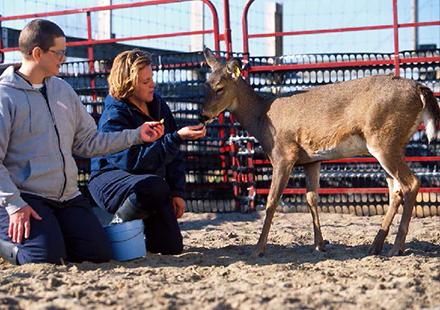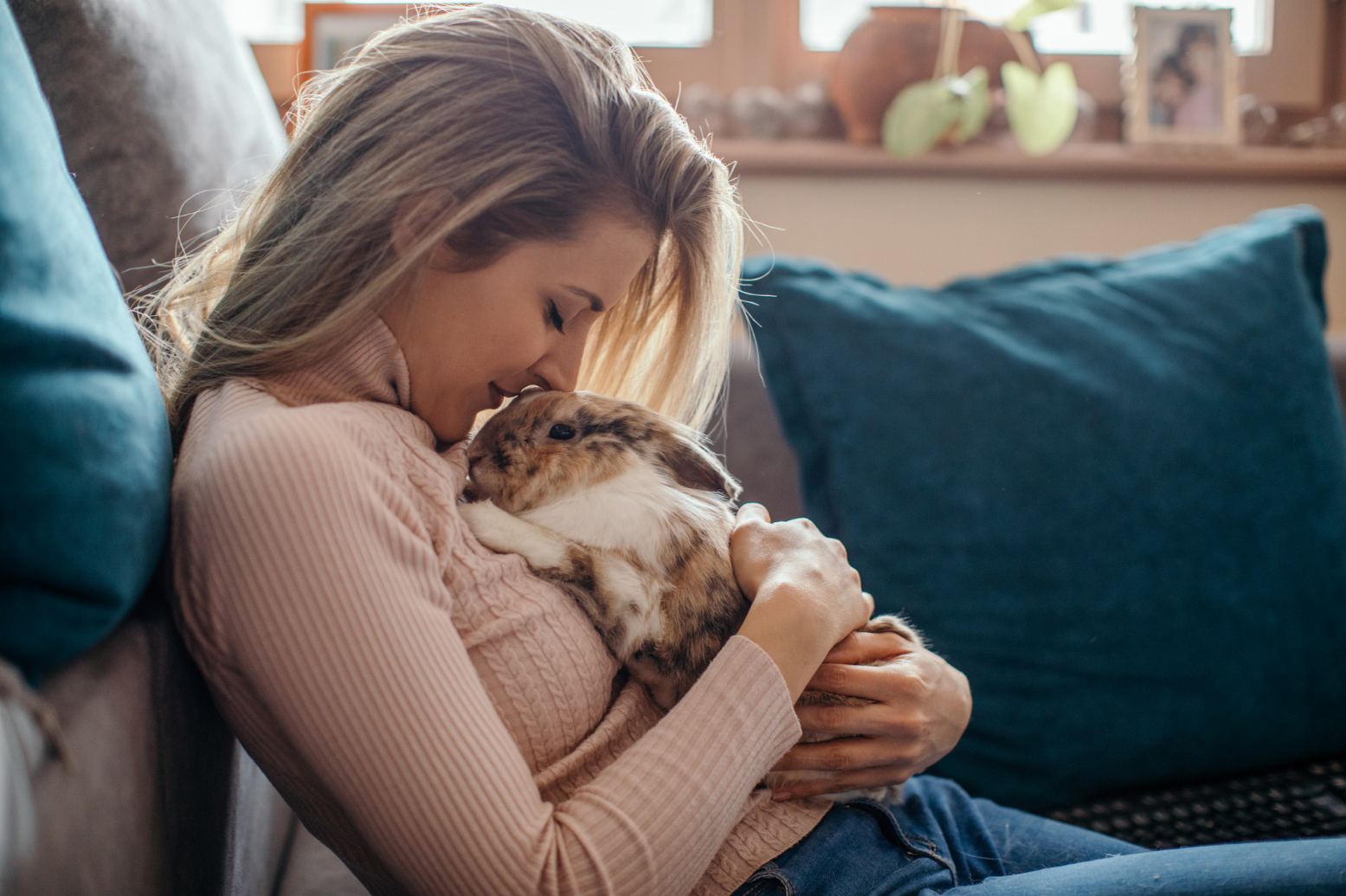Pet Behavior Matching Game
Animals perform many different behaviors every day to interact with themselves, other animals, humans, and their environment. Have you ever noticed your pet's behaviors? Normal behaviors like playing or grooming tell us that an animal is happy and relaxed. When animals become stressed, bored, or sick, they may show 'abnormal behaviors' like biting, hiding, or pacing. It's important to identify and understand animal behaviors and their causes to ensure they are happy and stress free.
 About the Experiment
About the Experiment
Use this activity to learn more about different animal behaviors.
 |
Details
|
 |
|
 |
|
 What You'll Need
What You'll Need
- Printed out memory cards (Sheet 1), (Sheet 2), (Sheet 3), (Sheet 4)
- Scissors
- Cardstock paper (optional)
 Let's Do This!
Let's Do This!
Note: This game can be played as a single player game or with multiple people.
- Print out the memory cards found below. Print them twice, so there are two of each card.
- Carefully use the scissors to individually cut out the cards.
- Mix the cards up and lay all of them face down.
- Choose who will go first. The first player turns over any two cards. If the cards match, the person keeps the set of cards. If the cards don't match, they are flipped back to face down, and it's the next person's turn.
- Play until all the cards have been matched.
- Whoever has the most matches at the end of the game wins
What Did You Learn?
- When flipping over each card, what was your reaction to the animal? Did the animal seem happy, stressed, angry, playful?
- How did your initial reaction match up with the description of the animal's behavior?
- What behaviors on the cards did you find most interesting?
- What behaviors on the cards were you not aware of?
- Does your pet, or a friend or family member's pet, exhibit any of these behaviors?

Animal Behavior Research from the Agriculture Research Service
Agriculture Research Service (ARS) scientists observe farm animals' behaviors to make sure we give them the best care. Here are some projects the scientists are working on:
- ARS scientists give chickens new toys to see how these changes can support positive behavior.
- ARS scientists are studying pigs' behavior to see how it changes as they become hot.
- Scientists are giving pigs toys to see how they change the pigs' behavior.
- ARS scientists found that hops that are too old for brewing beer, but still nutritious for cattle, may help keep cows healthy.
- ARS scientists found the first meal is vital for calf and piglet survival.
- ARS scientists are the first to demonstrate that goats with a different form of a gene are less susceptible to the disease scrapie.
- ARS scientists are researching the temperature preferences of sows, with an eye toward keeping them more comfortable.
Animal Welfare Information Center
The Animal Welfare Information Center at the National Agricultural Library provides information about animal wellbeing and how to house and care for animals.
Animal Welfare Information Center: Housing, Care and Welfare



